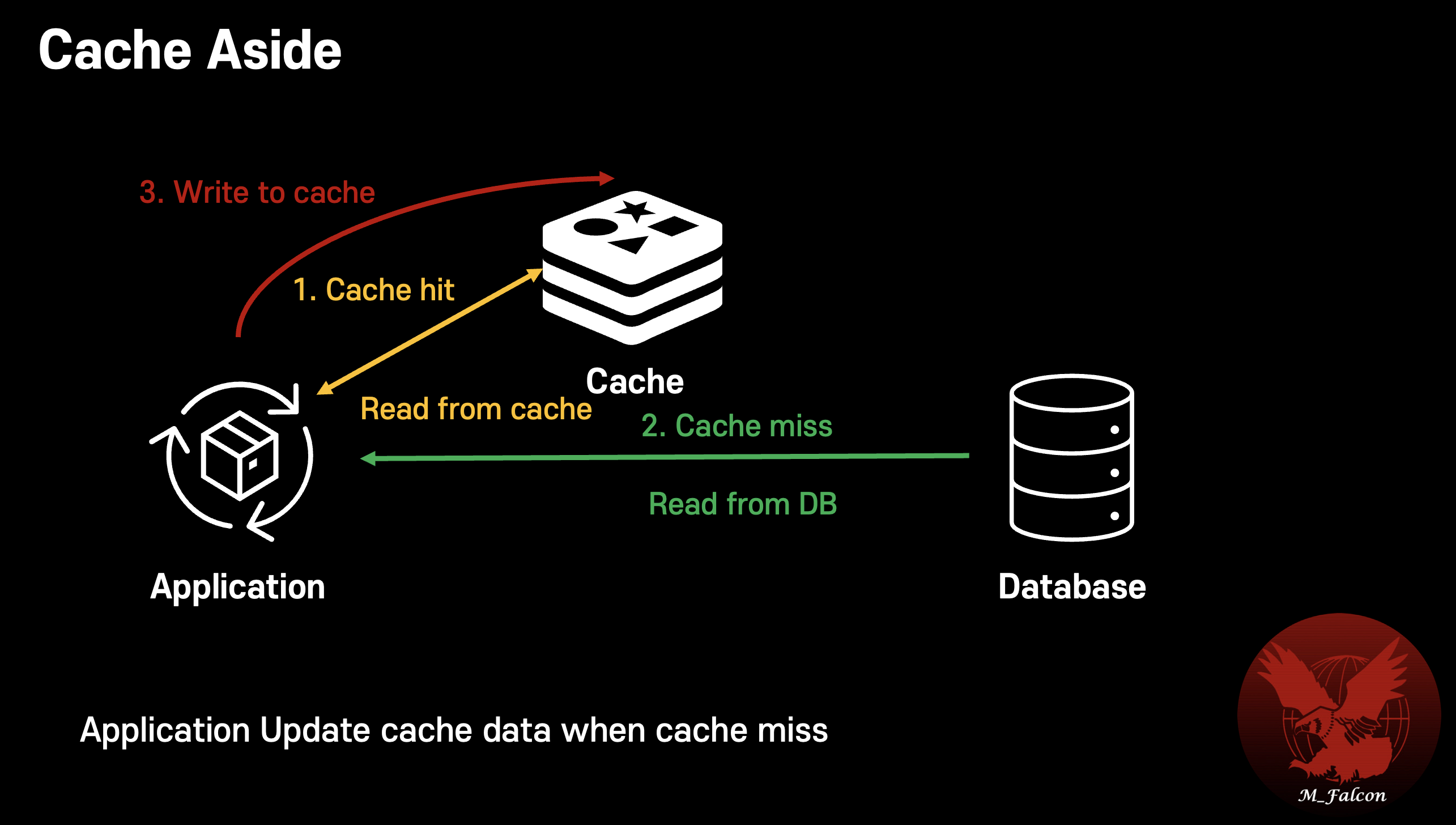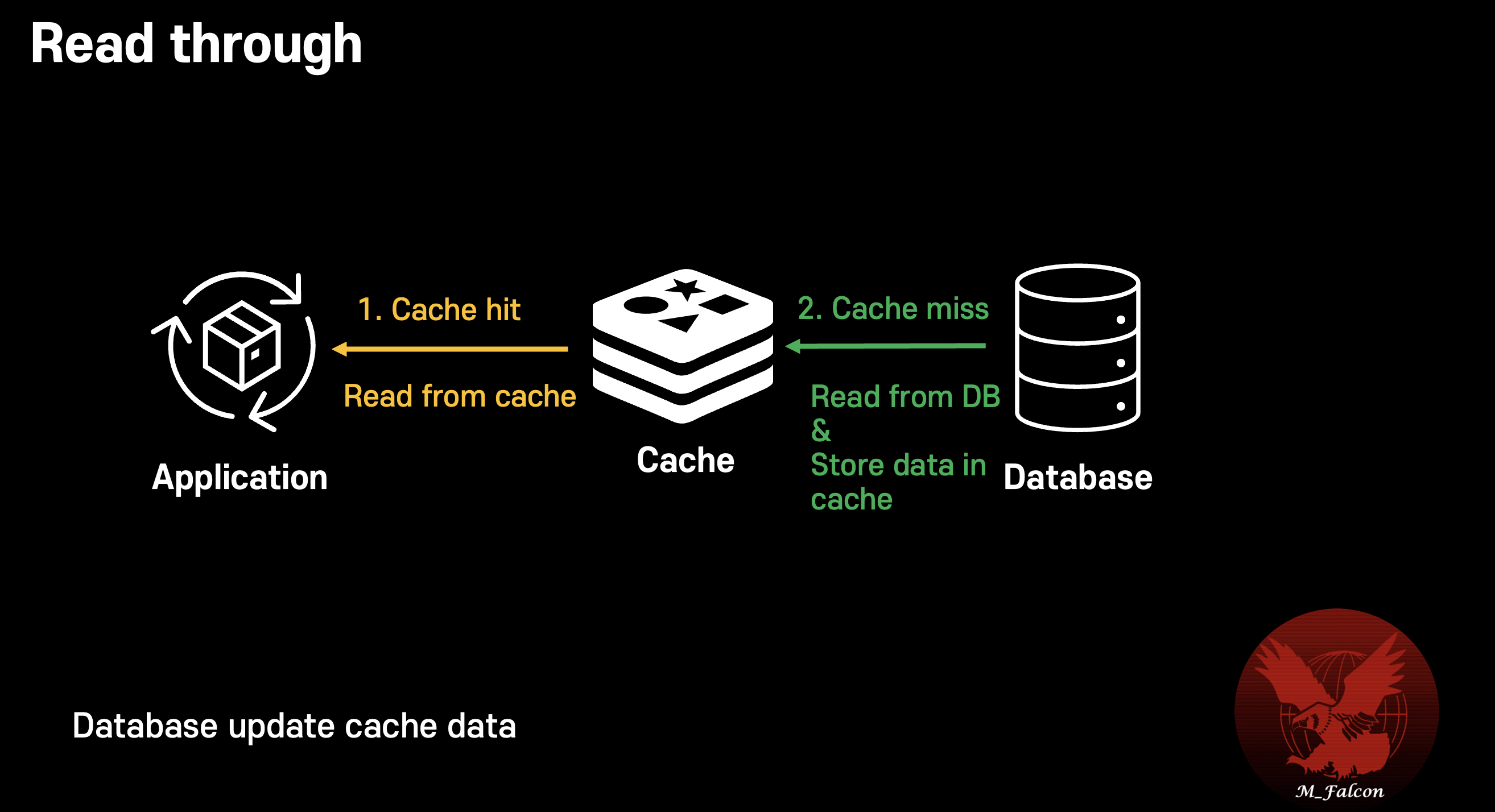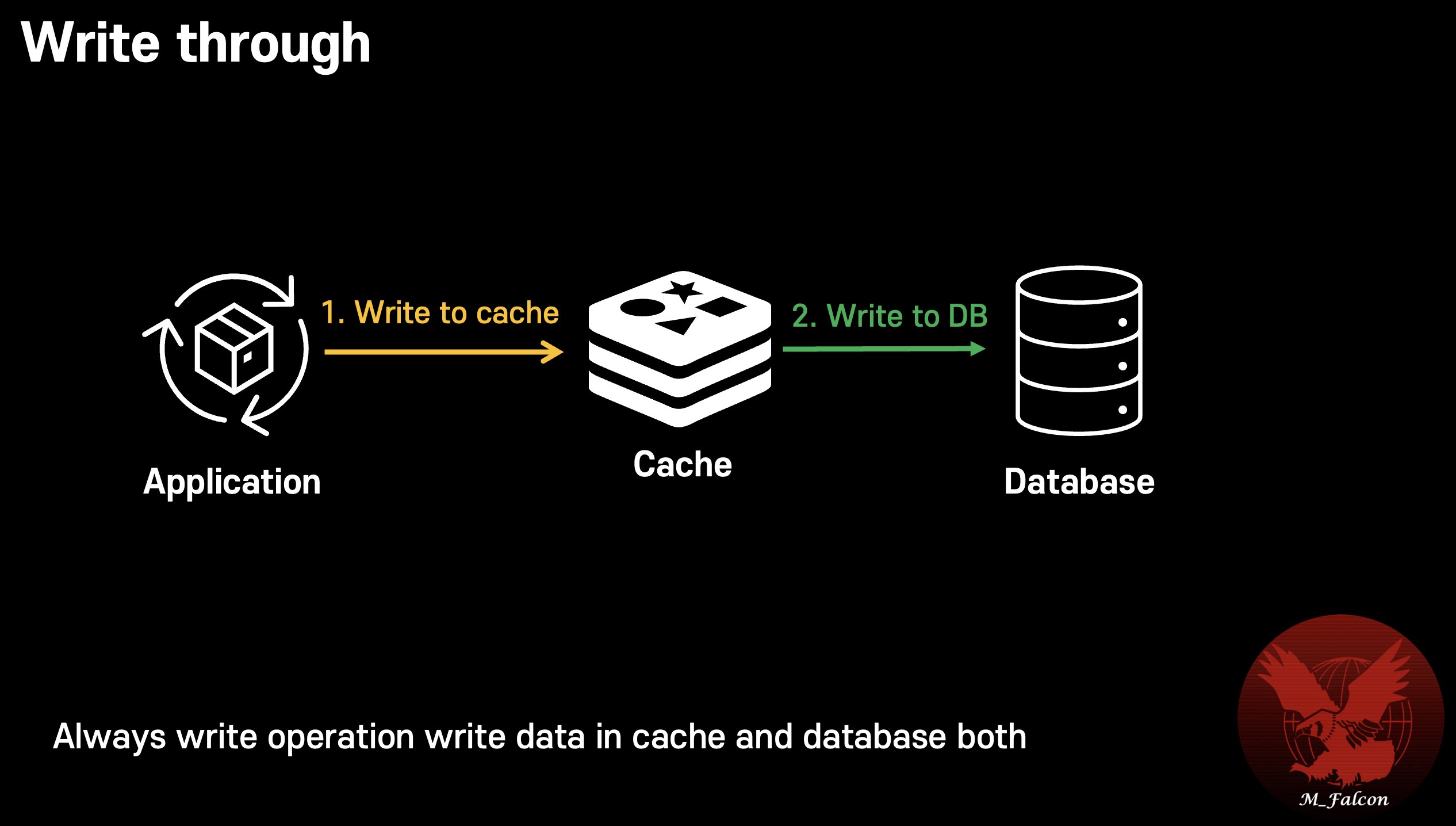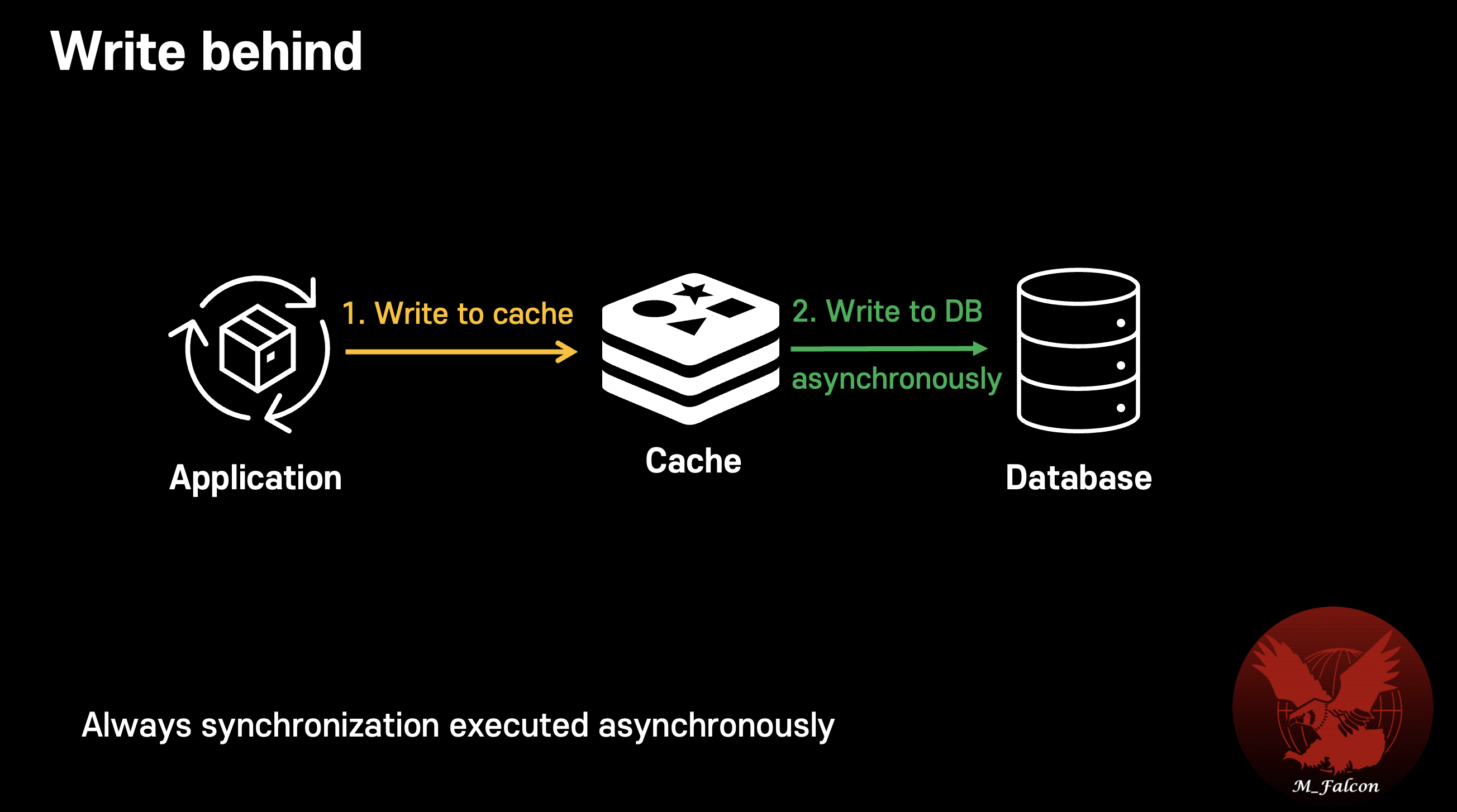1. Cache Aside
 Application update cache data only when cache miss occurs reading from database
Application update cache data only when cache miss occurs reading from database
When to use
Massive read workload
Pros
- Have elasticity in error since cache memory is separated even though cache cluster is down
- Can have different data schema
Cons
Synchronization issue Not always sync cache data with database
Slow when cache miss occurs
2. Read Through
Database update cache when cache miss

When to use
Massive read workload
Pros
- Always data is synchronized if using with Write-Through
Cons
- Data schema should follow database entity schema
- First request data always meets cache miss
3. Write Through
Application write all data in cache first and synchronized with db

When to use
All cache data must be synchronized.
Pros
- Always data is synchronized between cache and DB
Cons
- All data is in cache even though which is not used.
- Write operation performance degradation since all write operations must be hit DB
4. Write Behind

When to use
Massive write workload
R/W work load
Read through + Write Behind strategy => Fast R/W and can get synchronized data
Pros
- Fast write operation
- Using batch write from cache to DB, can reduce db write operations
Cons
- Not strong consistency between cache and DB
- Exists data loss probability when cache error occurs
⚙️ Related tools
Redis Gears
You can use Redis Gears when to use Write-Through or Write-Behind strategy.
DAX
You can use DAX when to use Read-Through + Write-Through strategy.
